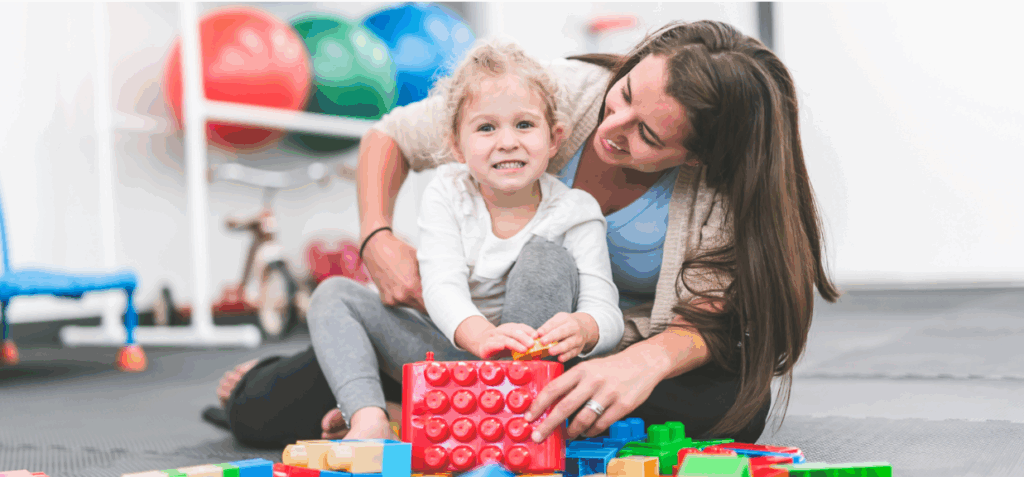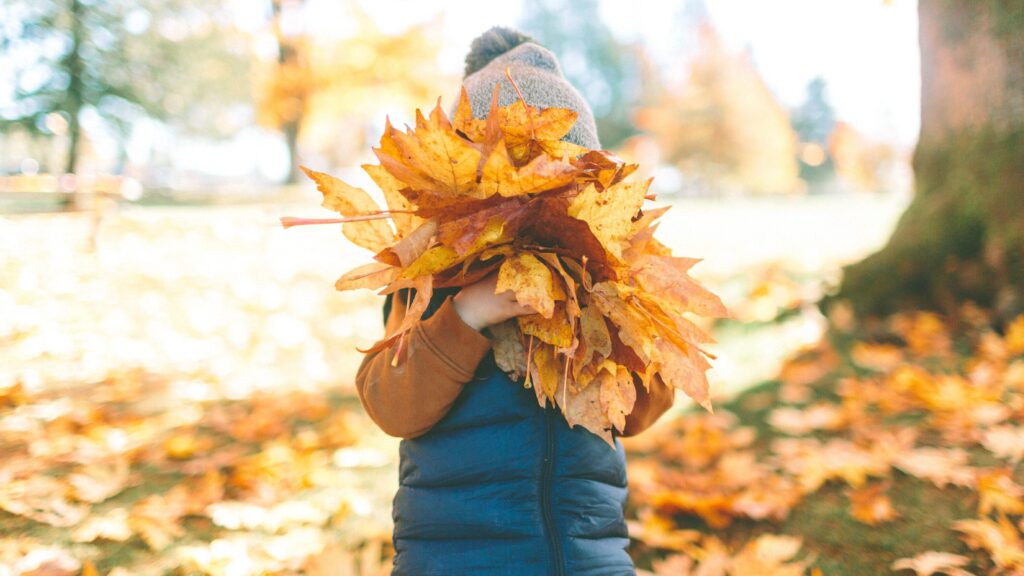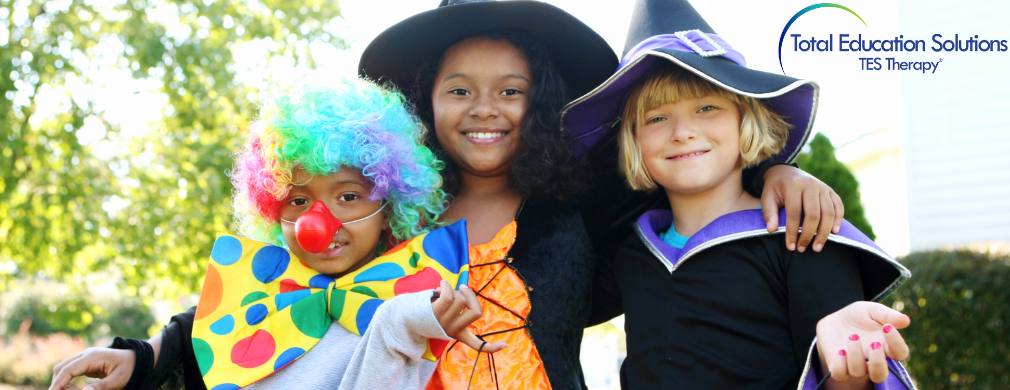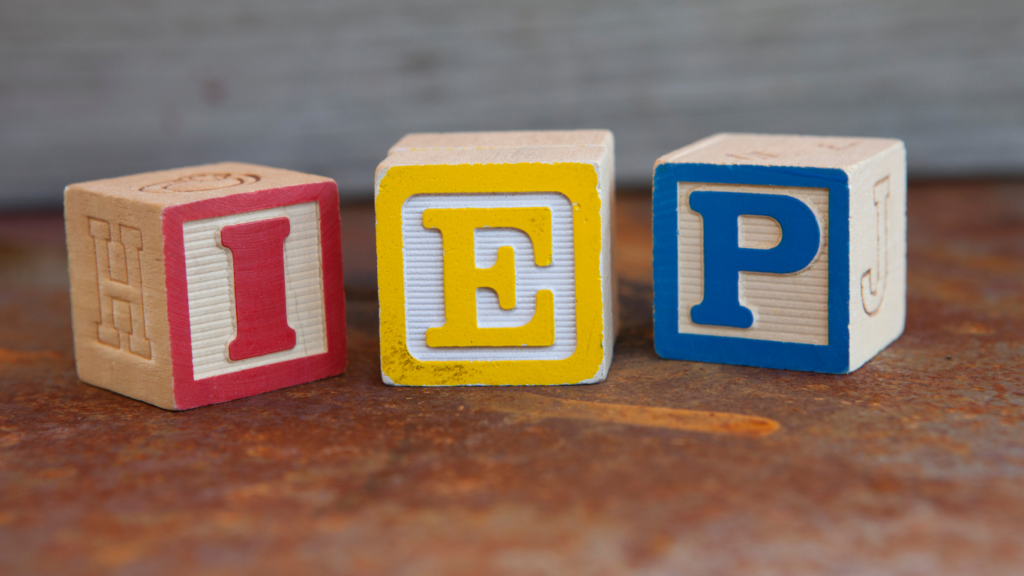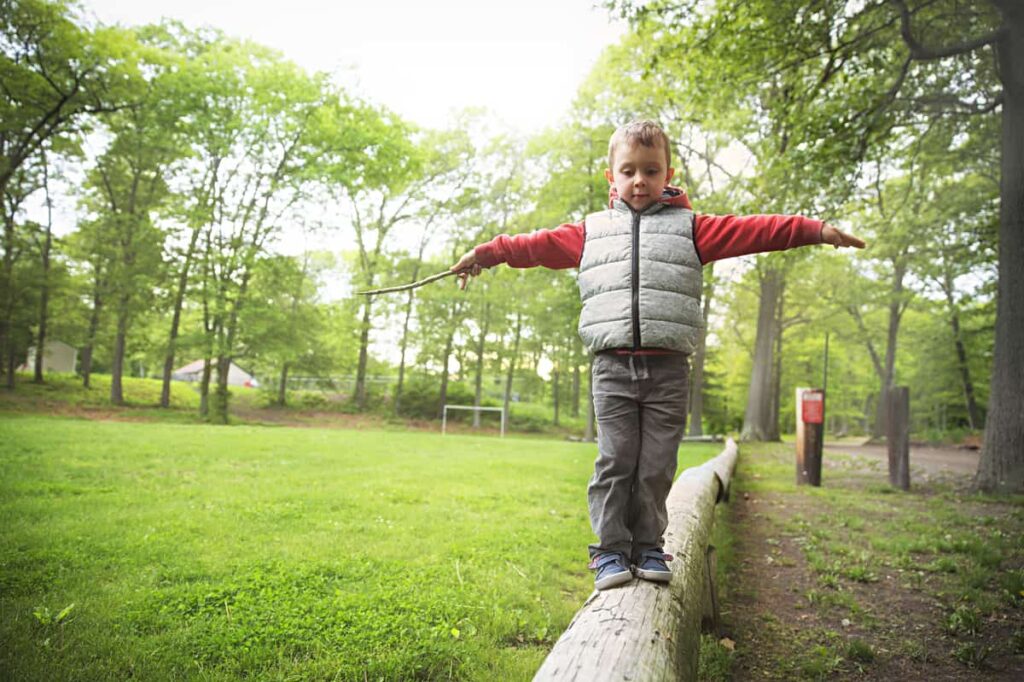Halloween is a fun-filled time of year universally loved by kids across America. The costumes, candy, and late-night shenanigans allow kids to create happy and fun-filled memories – but it’s not necessarily like that for everyone.
The eerie lights of Jack-o-Lanterns, spooky sounds of haunted houses, itchy costumes, and hard-to-breathe-in plastic masks can be hard to deal with for children on the autism spectrum.
Here are some sensory issues that your child with autism might struggle with during Halloween and some things you can do to help them have a sensory-free holiday and make Halloween a safe, comfortable, and fun experience!
Sensory Challenges That Kids with Autism Experience
Sensory issues are very common for people on the autism spectrum. It’s so prevalent as an ASD symptom that it’s included in the diagnostic criteria in the DSM-5.
Autism spectrum disorder is a diverse condition with many symptoms and quirks. No two cases are alike, and not all kids with autism experience sensory issues in the same way.
People with ASD can experience sensitivity from all five senses: sight, sound, taste, touch, and smell. They might be highly averse to certain textures, flavors, or scents to the point of triggering a meltdown. A common related symptom is balance issues as well. Children on the spectrum might experience a heightened awareness of body position and movement (proprioception) or that of internal body cues and sensations (known as interoception).
Hypersensitivity vs. Hyposensitivity
Generally speaking, ASD sensitivity falls between two extremes: hypersensitivity and hyposensitivity.
Hypersensitivity refers to over-responsiveness from specific sensory stimulation. Children with ASD can experience this when exposed to bright lights, coarse textures, and particular tastes and sounds. People on the spectrum who experience this kind of sensitivity might go out of their way to avoid them to avoid being over-stimulated. This is often why people on the autism spectrum often avoid fireworks.
Hyposensitivity, on the other end, is also very common among people with autism and refers to under-responsiveness to certain senses.
People with ASD who are hyposensitive may be fixated or highly drawn to certain senses and stimuli and seek them out – certain sounds, touching particular objects, or rocking back and forth in a hunched cradle position.
They may also go through continual, repetitive motions such as wringing their hands or making certain sounds. This motion is referred to as stimming, and it’s common for people to do on the spectrum when they feel overwhelmed and need something to focus on to distract them from their discomfort.
How Sensory Issues Affect Halloween Activities
Kids with autism are prone to various sensory issues (or needs) at differing intensity levels, but that doesn’t mean they can’t have fun, enjoy themselves, and just be kids like everyone else on Halloween.
Here are some things you can do as a parent to make sure your child with autism has a safe and fun Halloween free from sensory overload:
Exposure to Halloween Decor
Halloween is filled with loud, spooky, or unexpected noises that can be frightening and unfamiliar to a child with autism. Things like spider webs, plastic skulls and skeletons, ghostly wails, and mad scientist laughter can quickly lead to over-stimulation for kids with autism if they’re not prepared.
The best way to help prepare your child for what they might encounter on Halloween is by exposing them to Halloween decor in a controlled manner where they feel safe and free to explore. Try taking them to the Halloween section of a department store and letting them touch and see everything on their terms – so they’ll know what to expect and have some context for the spooks and scares happening around them.
A tip to keep in mind here: use light covers, sunglasses, or hats for your child when they are exposed to these kinds of lights.
Monitor Discomfort in Social Situations
Children with autism are often most vulnerable in social situations where they don’t know how to interact with others and feel confused and afraid.
Being around Halloween crowds of trick-or-treaters, flashing decorations, or scary sounds that come out of nowhere can cause sensory meltdowns in children with autism.
To prevent the worst from happening, try choosing a codeword or a signal that your child can use when feeling overwhelmed, so you know what’s happening and can respond quickly. Your child can say the code word to you as a sign that Halloween is getting too much for them and that they need a break.
If your child with ASD can’t process what’s happening, you can always cut things short and come up with traditions for your own family. Find whatever works for your child and best suits their needs.
Avoid Uncomfortable Costumes
Lots of popular Halloween costumes can have rough, hard edges, be hard to breathe or move around in, or be made of rough, coarse material that’s hard on the skin. Any of these things can be a recipe for a meltdown or at least contribute to it.
Luckily, there are some easy and simple ways to work around this while still making a creative Halloween costume for your child! Here are a few pointers you can follow:
- Prioritize comfort: Avoid any costumes made from flammable or itchy material and stick to ones that are softer on the skin. Anything comfortable enough to sleep or relax in, like themed pajamas, is a safe bet
- Costume sweatshirts: These are another great option if you can find sweatshirts from your child’s favorite movies, books, or video games
- Avoid masks: Try to find costumes of your child’s favorite characters that don’t involve masks covering their faces – they can easily make your child feel like their breathing is restricted and cause them to panic
Sensory-Friendly Costume Ideas
Now that we have some rules of thumb to follow, it’s time for the fun part – sensory-friendly costumes that are fun, creative, and a good fit for your child with autism to avoid any meltdowns or overstimulation!
Here are some options you can explore:
Harry Potter Characters
Long, flowy robes. Oversized comfy wizarding house scarves. A strong fiber that is breathable and relaxing. An iconic look from one of the most beloved children’s book series of all time. Dress your child up as Hermione Granger, Newt Scamander, or the Boy Who Lived himself for a magical and sensory-safe Halloween!
Mario Bros.
One of the most well-known video game franchises of all time, the Halloween costumes themselves are comfortable, soft material that’s both comfortable to wear and fun. Be mindful that the accompanying stick-on mustache might present some sensory problems, and do without them if necessary.
Disney Characters
Kids all come clamoring to dress up like the characters from their favorite Disney movies they grew up with, whether it’s Disney princesses like Moana and Sleeping Beauty or classic villains like Jafar and Maleficent. Best of all – they’re made with sensory-friendly polyester fabric, and rarely if ever, include masks!
Comfortable Onesies and One-Piece Costumes
If commercial costumes aren’t your thing, a kids’ onesie costume is a surefire way to dress your child with autism in a way that’s cute, fun, and safe. Animal onesies are fluffy, comfortable, and just adorable. Go for a onesie like a panda bear, a cat, or a dinosaur.
Sensory-Friendly DIY Costume Ideas
If all else fails, you can always do what parents often do and make your sensory-friendly costume at home! A quick browse on Pinterest can help spark some creative and fun ideas that are easy to put together, like animals, pirates, fairies, or even professions.
Themed-Costumes
Pay a visit to any store or look online to get a red and white striped shirt with a matching beanie, and presto – you have a low-key Where’s Waldo costume!
Get a tutu, tights, and flats, and you have yourself a ballerina.
Get two red shirts, some iron-on felt, a pen marker, and two blue wigs, and you can dress your twins up like Thing 1 and Thing 2 from The Cat in the Hat.
The possibilities are endless, and the only limitations are the ones in your imagination!
Craft Hoodies
Attach ears and whiskers to make a cat. Add a tail for a monkey. Or add spines for a dinosaur. Craft hoodies are a fun and inexpensive idea that can also be easily removed if things become too much for your child with autism to handle.
Keep Your Autistic Child Safe, and Sensory-Free
Your child with autism may have some very particular needs, but there’s no reason they shouldn’t be able to enjoy Halloween just like any other kid. If you stay mindful of their triggers and how to avoid them, your autistic child can have fun and make beautiful memories of the spookiest time of year on their terms!
To recap, here are some sensory issues to avoid when picking a Halloween costume for your child if they have a spectrum disorder:
- Avoid costumes with masks
- Stick to comfortable costumes made from regular clothes or breathable fabric
- Expose your child to Halloween-themed decorations so they can get familiar with them
- Get them something that’s easily removable at a pinch if they become overstimulated
- If all else fails: piece together your own costume!
Our Autism Navigator program in Ohio can help identify triggers and potential sensory issues in your child. Contact us today, and we can help your child with autism enjoy the holidays just like everyone else, in their unique way!

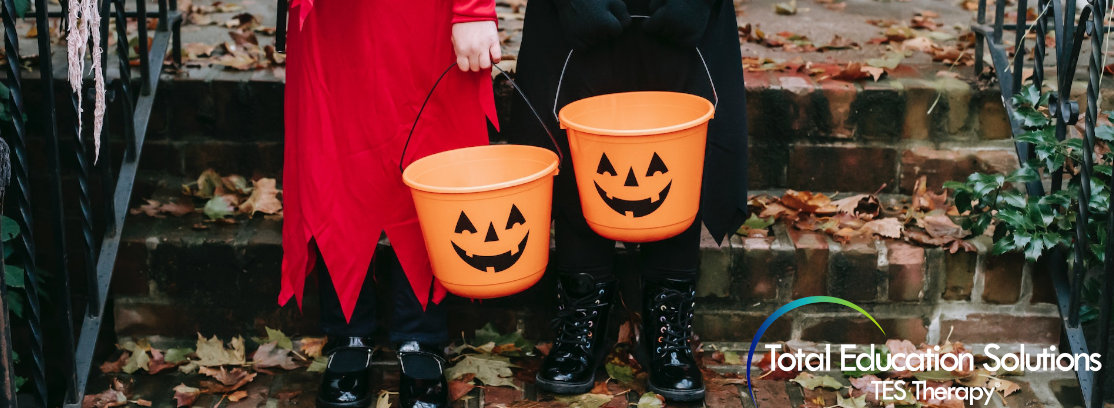
 19 Sep 2023
19 Sep 2023 

